Hiking, oh what a splendid way to immerse oneself in the splendors of Mother Nature! Who wouldn’t desire to tackle a multi-day hike? Trust me, I know how it feels: that initial sense of being swamped by an avalanche of gear options, fitness regimens and deciding on the perfect trail.
Yet after countless gracefully conquered treks and some serious legwork in research, I’ve mustered 7 secret nuggets of advice. These are designed specifically to guide you seamlessly from thorough preparation all the way to stepping triumphantly onto the trailhead.
So lace up those boots, let’s get you ready for an adventuring into wilderness like no other!
Key Takeaways
- Thoroughly research the trail before starting your multi-day hike to understand its difficulty, terrain, and any necessary permits or regulations.
- Invest in proper gear, including appropriate clothing and footwear, and familiarize yourself with all your equipment before heading out on the trail.
- Build up endurance and fitness by practicing hiking with a loaded backpack and training in different weather conditions.
- Develop a positive mindset and mental resilience to overcome challenges during your hike.
Research and Choose Wisely
Thoroughly researching the trail is crucial to ensure a successful multi-day hike, as it allows you to make informed decisions about the difficulty level, terrain, and any necessary permits or regulations.
Research the trail thoroughly
Before you start your hike, look at the trail on a map. Know where it goes and how long it is. Try to find points of interest along the way like water sources or great views. Check for steep areas, rocks or other hard parts of the path.
Look for places to camp if you will be out more than one day. Put all this information in your head before you leave home.
Consider difficulty level and terrain
Getting the trail facts right is key. I look at the difficulty rating and terrain type first. A tough trail can tire me out too soon. An easy one might not give enough fun or a good workout.
It’s vital to match it with my fitness level.
The length of the trail also matters a lot. If it’s too long, I may have to find spots to rest or even camp overnight. Maps and brochures help too. They show how high we climb, where bathrooms are, and where cars can park close by! For those just starting on multi-day hikes, don’t rush in without training well first!
Learn about any permits or regulations
Before you plan your hike, you must study the rules. Some trails may need permits. This means you have to ask for permission to use them. Rules can change from place to place too. They tell us what we can and cannot do on a trail.
Try to find this out early. You don’t want any bad surprises on your trip! For multi-day hikes, these rules are very important!
Invest in Proper Gear
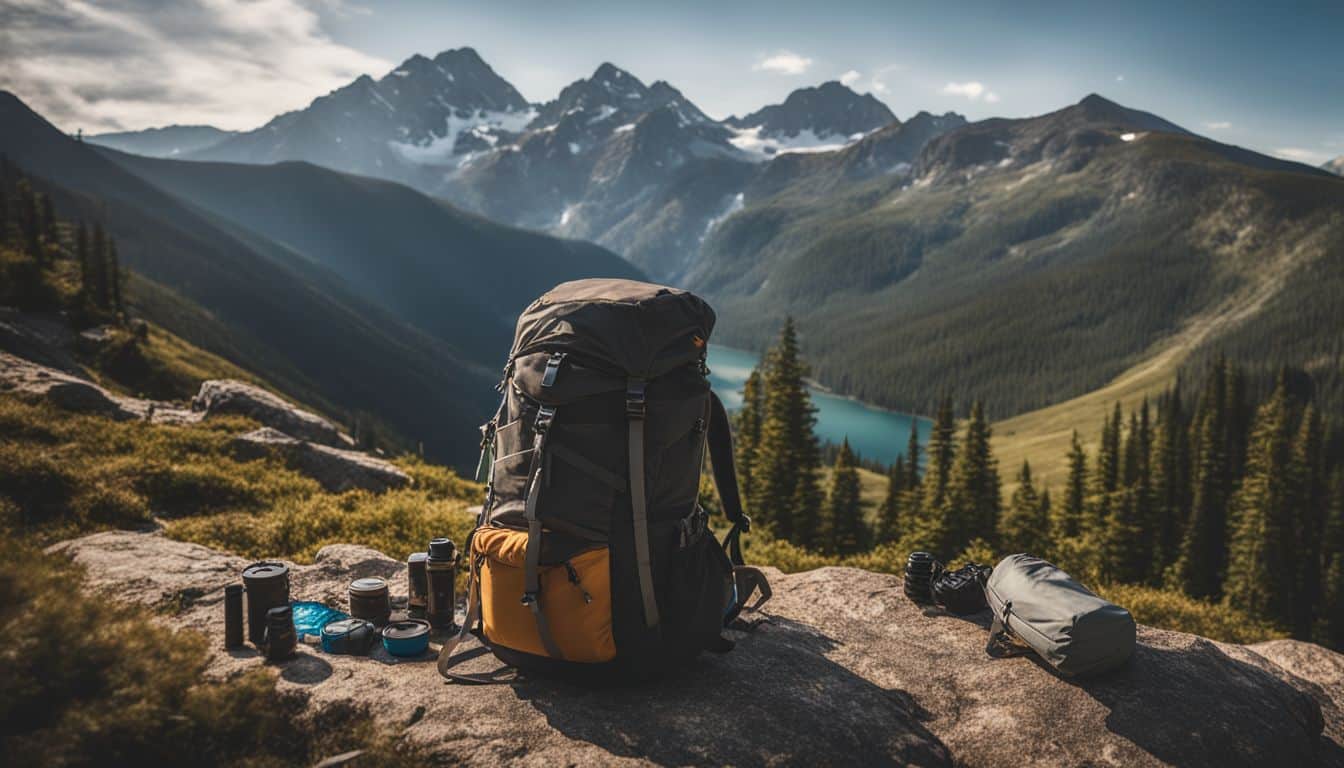
Choose appropriate clothing and footwear, pack essential items and equipment, and test and familiarize yourself with the gear.
Choose appropriate clothing and footwear
When preparing for a multi-day hike, it’s important to choose the right clothing and footwear. For longer or multi-day hikes, hiking boots with ankle support are recommended. They provide stability and protect your feet from rough terrain.
On the other hand, low-top hiking shoes or lighter trail shoes are suitable for shorter hikes. When it comes to clothing, make sure that your tops, bottoms, jackets, and accessories work together harmoniously and suit the hiking conditions.
Crew necks or zip-necks are good options for tops as they allow easy venting when you get too warm. Also, understanding different fabrics and their properties can help you choose appropriate hiking clothing that will keep you comfortable throughout your hike.
Pack essential items and equipment
When preparing for a multi-day hike, it is important to pack essential items and have the right gear. Here are some important things to include:
- Proper footwear: Invest in sturdy and comfortable hiking boots or shoes that provide good traction.
- Navigation tools: Bring a map, compass/GPS, and know how to use them to navigate the trail.
- Water: Carry enough water for the duration of your hike and consider using a hydration system or water purifier.
- Extra clothing: Pack extra layers like socks, gloves, and a hat to stay warm in unpredictable weather conditions.
- First aid kit: Have a basic first aid kit with bandages, antiseptic ointment, pain relievers, and any personal medications.
- Shelter: Depending on the length of your hike, bring a tent or a lightweight sleeping bag and pad.
- Food: Plan your meals ahead and pack lightweight, high-energy snacks that are easy to prepare on the trail.
Test and familiarize yourself with the gear
Before embarking on a multi-day hiking trip, it’s crucial to test and become familiar with your gear. This is important because you want to ensure that everything functions properly and fits comfortably before hitting the trail.
Take the time to try on your clothing and footwear, making sure they are suitable for the terrain and weather conditions you will encounter. Additionally, pack all the essential items and equipment you’ll need, such as a reliable backpack, sleeping bag, cooking supplies, navigation tools, and first aid kit.
Familiarize yourself with how each item works so that when you’re out in nature, you can use them confidently and efficiently. By testing and getting acquainted with your gear beforehand, you’ll be well-prepared for any challenges that may arise during your hike.
Mental and Physical Preparation
Get yourself physically and mentally ready for the challenges of a multi-day hiking adventure. Build up your endurance, practice hiking with a loaded backpack, train in different weather conditions, and develop a positive mindset.
Ready to dive deeper? Keep reading for our seven secret tips to prepare for an unforgettable trekking experience!
Build up endurance and fitness
To prepare for multi-day hiking, it’s important to build up endurance and fitness. Cardio exercises like running, swimming, or walking are great ways to increase your stamina. Regular physical activity not only helps with overall fitness but also boosts brainpower and activates happiness hormones.
It’s essential to create a fitness regimen that suits your lifestyle and gradually increases in intensity over time. Training for hiking and backpacking trips can help tone your body, improve mental toughness, and enhance overall wellbeing.
So lace up those shoes and start getting active!
Practice hiking with a loaded backpack
Practice hiking with a loaded backpack is an important part of preparing for multi-day hiking. It can help build strength and endurance in the glutes and quads, which are the muscles you use the most while hiking.
This kind of training will make it easier to carry a heavy backpack for long distances. By gradually increasing the weight in your backpack during practice hikes, you can simulate the conditions of your actual hike and ensure that you are physically prepared for the challenge ahead.
Remember to start with lighter weights and slowly progress to heavier loads as your fitness improves. Don’t forget to also focus on proper form while hiking, as this will help prevent injuries and improve efficiency on the trail.
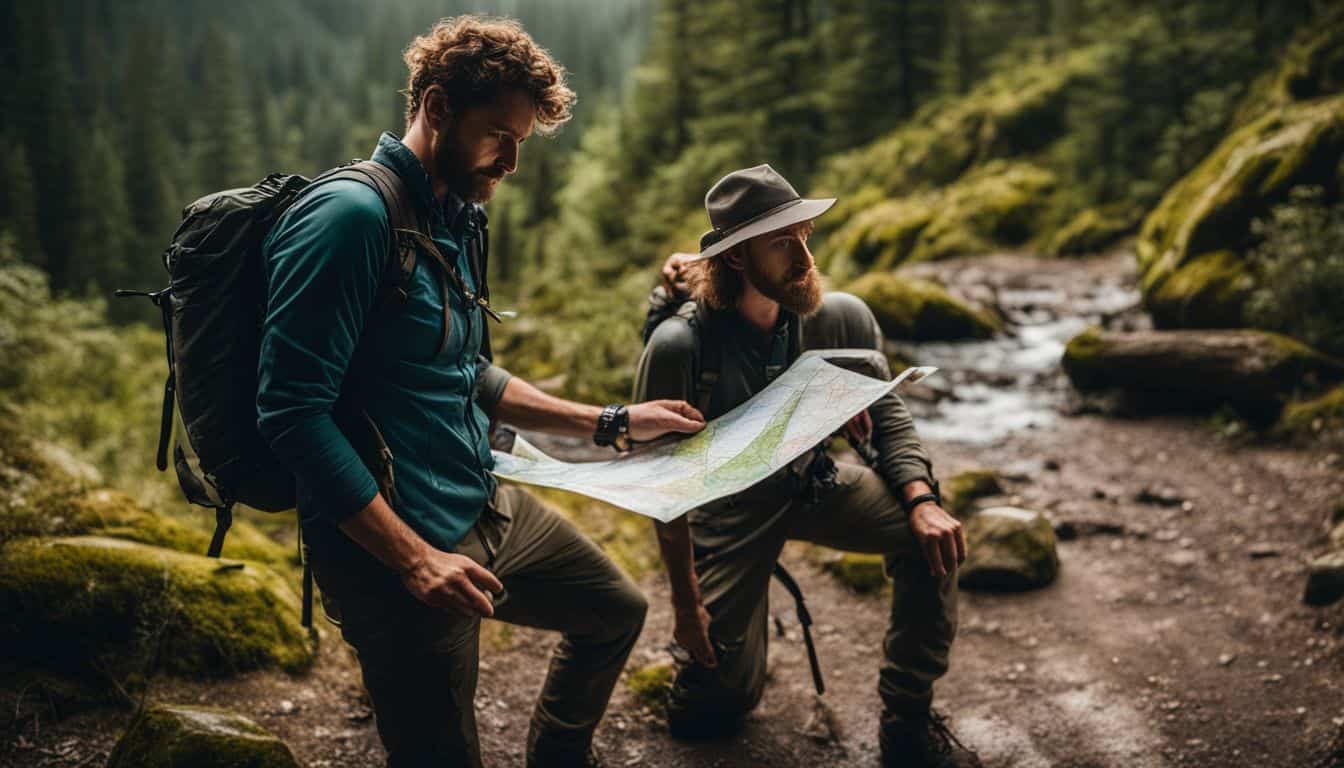
Train in different weather conditions
Training in different weather conditions is an essential part of preparing for multi-day hiking trips. It helps us build the necessary skills and adaptability to handle various outdoor situations.
By training in different weather, we become familiar with how our body responds to heat, rain, or cold temperatures. We also learn how to adjust our clothing and gear accordingly. This kind of preparation enhances both physical endurance and mental toughness, as we face challenges head-on and push ourselves beyond comfort zones.
So whether it’s sunny or snowy outside, I make sure to train in all kinds of weather conditions to be fully prepared for my hiking adventures.
Develop a positive mindset and mental resilience
Developing a positive mindset and mental resilience is crucial for a successful multi-day hike. Just like physical strength, mental strength can be learned and developed over time.
Having a positive mindset means approaching challenges with optimism and believing in your ability to overcome them. It’s about focusing on what you can control rather than dwelling on the things you can’t.
By developing emotional strength and mental toughness, you’ll be better equipped to handle difficult situations that may arise during your hike. Cultivating an optimistic mindset also contributes to improved cognitive flexibility, allowing you to adapt and problem-solve more effectively on the trail.
So, take the time to work on your mental wellbeing and build up your emotional resilience – it will make all the difference in your hiking experience.
Mental preparation is just as important as physical conditioning when taking on challenging activities like hiking. It’s not only about having strong legs; it’s also about having a strong mind.
Training yourself mentally involves building up your mental endurance and fortitude so that you can push through both physical fatigue and any unexpected obstacles or setbacks along the way.
Seven Secret Tips for Successful Multi-Day Hiking Preparation
When preparing for a multi-day hiking adventure, here are seven secret tips that can help ensure a successful experience:
- Research the trail thoroughly before starting your hike. Know the distance, difficulty level, and terrain so you can adequately prepare.
- Invest in proper gear such as appropriate clothing and footwear to keep you comfortable and protected on the trail. Pack essential items and equipment like a tent, sleeping bag, and cooking utensils.
- Test and familiarize yourself with all your gear before your hike to make sure everything is working properly.
- Build up endurance and fitness by training with loaded backpacks and hiking in different weather conditions. This will help you adapt to various challenges on the trail.
- Developing a positive mindset and mental resilience is crucial for long hikes. Stay motivated, focus on enjoying the journey, and be prepared to face any obstacles that may come your way.
- Familiarize yourself with Leave No Trace principles to minimize your impact on the environment. Proper waste disposal and hygiene practices are important for preserving nature’s beauty.
- Respect local customs, traditions, rules, and guidelines of the region you will be hiking in. Show respect for wildlife and natural habitats by observing from a safe distance.
Leave No Trace Principles
Familiarize yourself with the seven principles that promote responsible hiking and minimize environmental impact. From waste disposal to respecting wildlife, these tips will ensure you leave nature as you found it.
Learn more about how to make a positive difference on your next multi-day trek by reading the full article.
Familiarize yourself with the seven principles
I want to tell you about the seven principles of Leave No Trace, which are important for multi-day hiking preparation. These principles help us protect the environment and enjoy our hiking experience responsibly.
- Plan ahead and prepare: Before going on a hike, make sure to research the trail and create a detailed itinerary. This will help you stay safe and be prepared for any unexpected situations.
- Travel and camp on durable surfaces: It’s important to stick to designated trails and campsites to minimize damage to the environment. Avoid disturbing vegetation or creating new paths.
- Dispose of waste properly: Carry a small trash bag with you and pack out all your garbage. Don’t leave anything behind, including food scraps or toilet paper. Properly dispose of waste in designated receptacles or burying it in a cathole, at least 200 feet away from water sources.
- Leave what you find: Resist the temptation to take souvenirs from nature. Leave rocks, plants, and other natural objects as you found them so others can enjoy them too.
- Minimize campfire impacts: Campfires can damage fragile ecosystems, so use existing fire rings when available or bring a portable stove instead. If you do build a fire, choose a site that is away from vegetation and always fully extinguish it before leaving.
- Respect wildlife: Observe animals from a distance without disturbing them or feeding them. Keep food securely stored to avoid attracting wildlife to your campsite.
- Be considerate of other visitors: Share the trail with others by yielding right of way when needed, keeping noise levels down, and respecting their space and privacy.
Minimize your impact on the environment
As a hiking enthusiast, it’s important to minimize your impact on the environment while enjoying the great outdoors. One way to do this is by following the Leave No Trace principles.
These guidelines promote responsible recreation and sustainable practices. By planning ahead and preparing properly, you can ensure that you have everything you need without overpacking or wasting resources.
Traveling and camping on durable surfaces helps prevent erosion and protects natural habitats. Proper waste disposal, including human waste, is crucial for maintaining cleanliness and hygiene in outdoor spaces.
Follow proper waste disposal and hygiene practices
I always make sure to follow proper waste disposal and hygiene practices when I go hiking. It’s important to pack out all trash, leftover food, and litter, so we can keep the environment clean and preserve the beauty of nature.
I inspect my campsite, food preparation areas, and rest areas for any trash or spilled foods before leaving. By following Leave No Trace Principles, I minimize my impact on the environment and help reduce my carbon footprint.
Taking care of our surroundings is not only responsible but also ensures that future hikers can enjoy the wilderness too.
Respect Local Customs and the Region
Learn about local traditions and customs, follow any specific rules or guidelines, and respect wildlife and natural habitats during your multi-day hiking adventure.
Learn about local traditions and customs
Respecting the region you’re visiting and its customs is an important aspect of preparing for a multi-day hike. By taking the time to learn about local traditions and customs, you show respect for the local culture and enhance your overall experience.
It’s a way to immerse yourself in the local culture and gain a deeper understanding of the people and their way of life. Hiring locals as guides or joining cultural tours can provide access to knowledge about the local customs, language, religion, and rituals.
Researching these aspects before your trip will not only enrich your journey but also contribute to more authentic and immersive experiences along the trail. Understanding the language spoken in the region can further enhance communication with locals and foster meaningful connections during your hike.
Follow any specific rules or guidelines
Respecting the customs and guidelines of the region you’re hiking in is crucial for a successful multi-day hike. It shows cultural sensitivity, appreciation, and helps you immerse yourself fully in the experience.
By learning about local traditions and customs beforehand, you can avoid unintentionally causing offense or disrespecting others. This includes following specific rules related to hiking trail etiquette and being aware of social norms.
Adhering to these guidelines not only ensures a positive interaction with locals but also contributes to personal growth as it promotes cultural awareness and respectful behavior. So, during your multi-day hike, take the time to understand and respect the customs of the region you are exploring!
Respect wildlife and natural habitats
It’s important to respect wildlife and their natural habitats while hiking. Observing animals from a distance is crucial because getting too close or following them can harm their health and disrupt their natural behaviors.
Feeding animals may also be harmful, so it’s best to avoid giving them food. When hiking, it’s important to stay on designated trails to prevent damage to the local habitat. Remember, critical and sensitive habitats should be avoided, especially during breeding and nesting seasons.
Properly disposing of waste is essential in order to avoid attracting animals. Let’s make sure we do our part in preserving wildlife and protecting their ecosystems!
Plan Ahead and Be Prepared
Create a detailed itinerary and schedule, research emergency contacts and medical facilities, and prepare for unexpected situations and emergencies.
Create a detailed itinerary and schedule
Planning ahead and being prepared is crucial for a successful multi-day hiking trip. Here are some tips to create a detailed itinerary and schedule:
- Organize your hike: Determine the duration of your trip and decide on the specific dates you will be hiking.
- Choose a backpacking destination: Research different trails and choose one that suits your interests and fitness level.
- Consider distance and difficulty: Take into account the length and difficulty of the trail when planning your daily mileage.
- Plan rest days: Allow for rest days during your hike to give yourself time to recover and enjoy the surroundings.
- Identify campsites or accommodations: Research and book campsites or accommodations along the trail in advance, especially during peak seasons.
- Note water sources: Mark locations where you can access water along the trail, so you can plan accordingly for refilling your water supply.
- Allocate time for breaks and meals: Factor in regular breaks throughout the day for resting, snacking, and enjoying meals with scenic views.
Research emergency contacts and medical facilities
I believe it is crucial to research emergency contacts and medical facilities before going on a multi-day hiking trip. Knowing who to contact in case of an emergency can make a big difference in ensuring your safety.
Take the time to gather information about nearby hospitals, clinics, and emergency services along the trail or in the surrounding areas. Additionally, find out if there are any specific procedures or protocols you should follow during emergencies.
Being prepared in this way will give you peace of mind and allow you to enjoy your hiking experience without worrying about what could happen.
Prepare for unexpected situations and emergencies
As a hiking enthusiast, it’s important to be prepared for unexpected situations and emergencies during your multi-day hike. This means planning ahead and taking proactive measures to ensure your safety.
One way to do this is by creating a detailed itinerary and schedule for your trip. By knowing where you’ll be and when, you can better anticipate potential risks or challenges along the way.
It’s also crucial to research emergency contacts and medical facilities in the areas you’ll be hiking through. Knowing who to contact in case of an emergency can provide peace of mind during your adventure.
Additionally, packing essential items like a first aid kit, extra food and water, as well as navigation tools such as a map or compass, can help you stay prepared for unforeseen circumstances.
Safety and Fun
Prioritize safety at all times, stay aware of your surroundings and have fun while enjoying the experience of multi-day hiking. Discover the secret tips for growth in my latest blog post!
Prioritize safety at all times
Safety should always be the top priority when it comes to multi-day hiking. Before hitting the trail, consult with a park ranger and create an itinerary to ensure you are well-prepared and informed about any potential risks or hazards.
It’s important to check the weather forecast and trail conditions beforehand, as they can greatly impact your safety. Always hike with at least one friend for added security, as hiking alone can be risky.
Make sure you wear proper gear, including sturdy hiking shoes, to protect your feet and prevent injuries. Additionally, packing essential items such as a first aid kit, map, compass, and extra food and water is crucial for emergencies.
Stay aware of your surroundings
It’s important to always stay aware of your surroundings while hiking. This means being conscious of the environment around you and keeping an eye out for any unexpected hazards or dangers.
Hikers should also respect wildlife and their habitats by maintaining a safe distance and not disturbing them. If you come across any wildlife, it’s best to stay calm and avoid running.
Remember to report any sightings to a State Parks ranger for everyone’s safety. By staying alert and attentive on the trail, you can ensure a safe and enjoyable hiking experience.
Have fun and enjoy the experience
As a hiking enthusiast, one of the most important things to remember is to have fun and enjoy the experience. It’s easy to get caught up in planning, preparing, and following all the safety rules, but don’t forget the joy that comes from being out in nature and exploring new trails.
Take a moment to appreciate the beauty around you, immerse yourself in the sights and sounds of your surroundings, and embrace the physical challenge of hiking. By finding joy in each step along the way, you’ll create lasting memories and truly make the most of your multi-day hiking adventure.
So go ahead, breathe in that fresh air, take it all in, and let yourself have a great time on your hike!
Training Tips to Get Ready
Train with the right equipment and gear, focusing on building endurance and strength while learning hiking etiquette and trail skills to prepare for your multi-day trek.
Give yourself enough time to prepare
Preparing for a multi-day hike is essential, and it’s important to give yourself enough time to get ready. Starting early allows you to gradually build up your endurance and fitness levels, which are crucial for the challenges of a long hike.
By pacing yourself and allowing ample time for training, you can avoid pushing your body too hard and risking injury. Additionally, starting with easier trails before attempting more difficult ones will help you gain experience and confidence.
Remember, preparation is key for a successful multi-day hiking adventure!
Focus on building endurance and strength
To get ready for multi-day hiking, it’s important to focus on building endurance and strength. This will help you comfortably tackle long distances and challenging terrains. To increase your leg strength, you can do exercises like squats, lunges, and step-ups.
For cardio endurance, activities such as walking, running, swimming, or cycling are great choices. Adding dynamic stretches to your routine can improve flexibility and reduce the risk of injury.
Remember to also work on balance training and core stability for better overall fitness. By incorporating these training tips into your preparation, you’ll be well-prepared for an enjoyable hiking experience!
Train with the right equipment and gear
To prepare for a multi-day hike, it’s important to train with the right equipment and gear. This means exercising with the equipment and weight you’ll be using on your hiking trip.
By doing this, you can get your body used to the demands of hiking and build up your strength and endurance. Make sure to wear proper hiking gear, such as hiking shoes that provide good traction and support for your feet.
Also, invest in a comfortable backpack that fits well and distributes weight evenly across your shoulders and hips. Don’t forget to wear appropriate clothing that is breathable, moisture-wicking, and protects you from the elements.
Learn hiking etiquette and trail skills
Hiking etiquette and trail skills are important to ensure a safe and enjoyable experience in the great outdoors. When hiking, it’s essential to respect other hikers and nature. This means staying on designated trails, not littering, and being considerate of others by keeping noise levels down.
Additionally, always yield to uphill hikers and be cautious when passing or meeting other groups on narrow trails. By following these guidelines, we can preserve the beauty of our natural surroundings for future generations to enjoy.
Conclusion on Multi-Day Hiking Preparation
In conclusion, preparing for a multi-day hiking trip requires research, proper gear, and mental and physical preparation. By following these seven secret tips, you can ensure a successful and enjoyable experience on the trail.
Remember to leave no trace, respect local customs and the environment, plan ahead and be prepared for any situation. With the right training and mindset, you’ll be ready to conquer your next outdoor adventure with confidence.
Happy hiking!
FAQs on Multi-Day Hiking Preparation
1. How should I prepare physically for a multi-day hike?
To prepare physically for a multi-day hike, you can start by gradually increasing your endurance through regular cardiovascular exercises such as walking or jogging. Additionally, incorporating strength training exercises to work on your core and leg muscles will be beneficial.
2. What essential items should I bring on a multi-day hike?
Essential items to bring on a multi-day hike include proper hiking shoes, comfortable clothing appropriate for the weather, plenty of water, food/snacks, navigation tools (map/compass), first aid kit, sunscreen, insect repellent, and emergency supplies like flashlight and whistle.
3. Are there any safety precautions I should take during a multi-day hike?
Yes! Safety precautions during a multi-day hike include informing someone about your hiking plans and estimated return time, staying on marked trails, following Leave No Trace principles by not littering and respecting nature, being aware of weather conditions and potential hazards along the trail.
4. How do I prevent blisters while hiking?
To prevent blisters while hiking:
– Wear well-fitting socks made of moisture-wicking material
– Choose shoes that provide good support
– Break in new footwear before your hike
– Keep feet clean and dry during breaks
– Use blister prevention products like moleskin or blister pads if necessary
5. How can I make sure I have enough energy for a long-distance hike?
Ensure you have enough energy for a long-distance hike by consuming high-energy snacks like nuts or trail mix throughout the day. Additionally drinking plenty of water at regular intervals is important to stay hydrated.

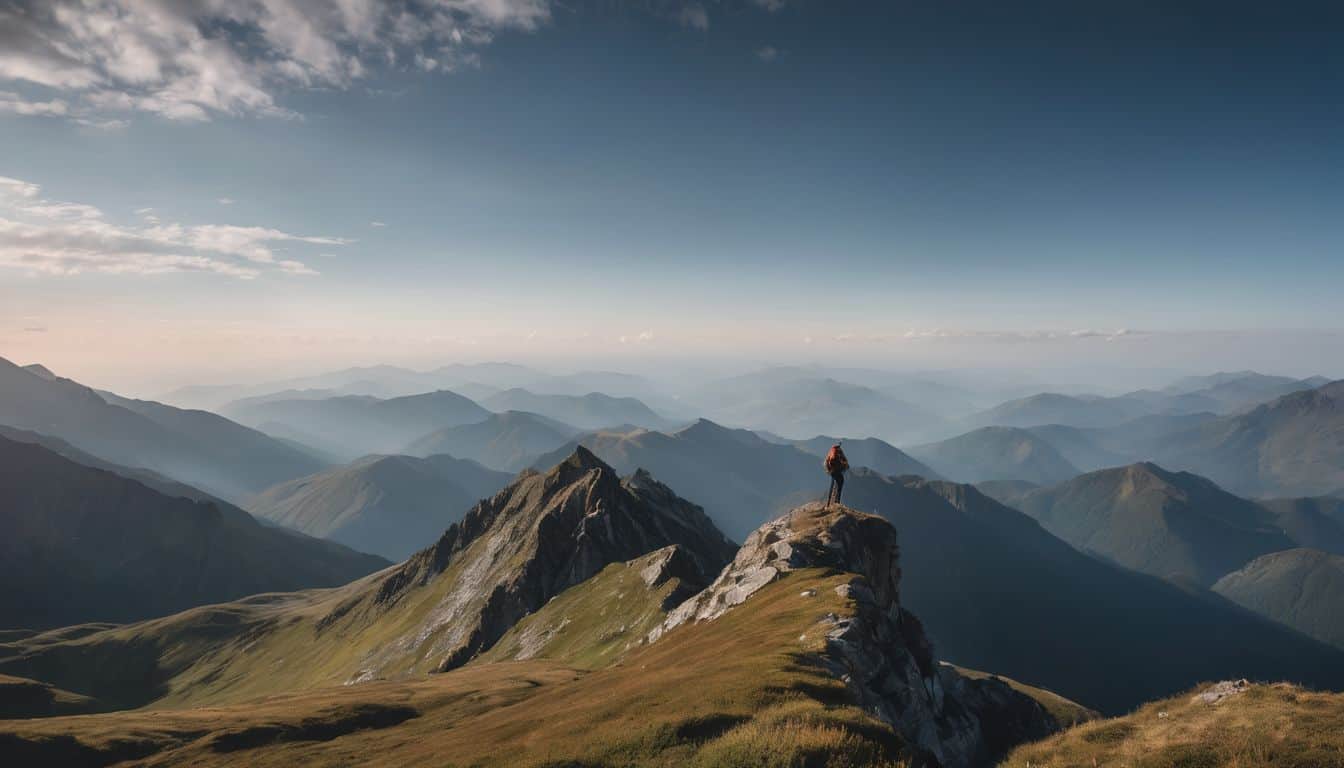
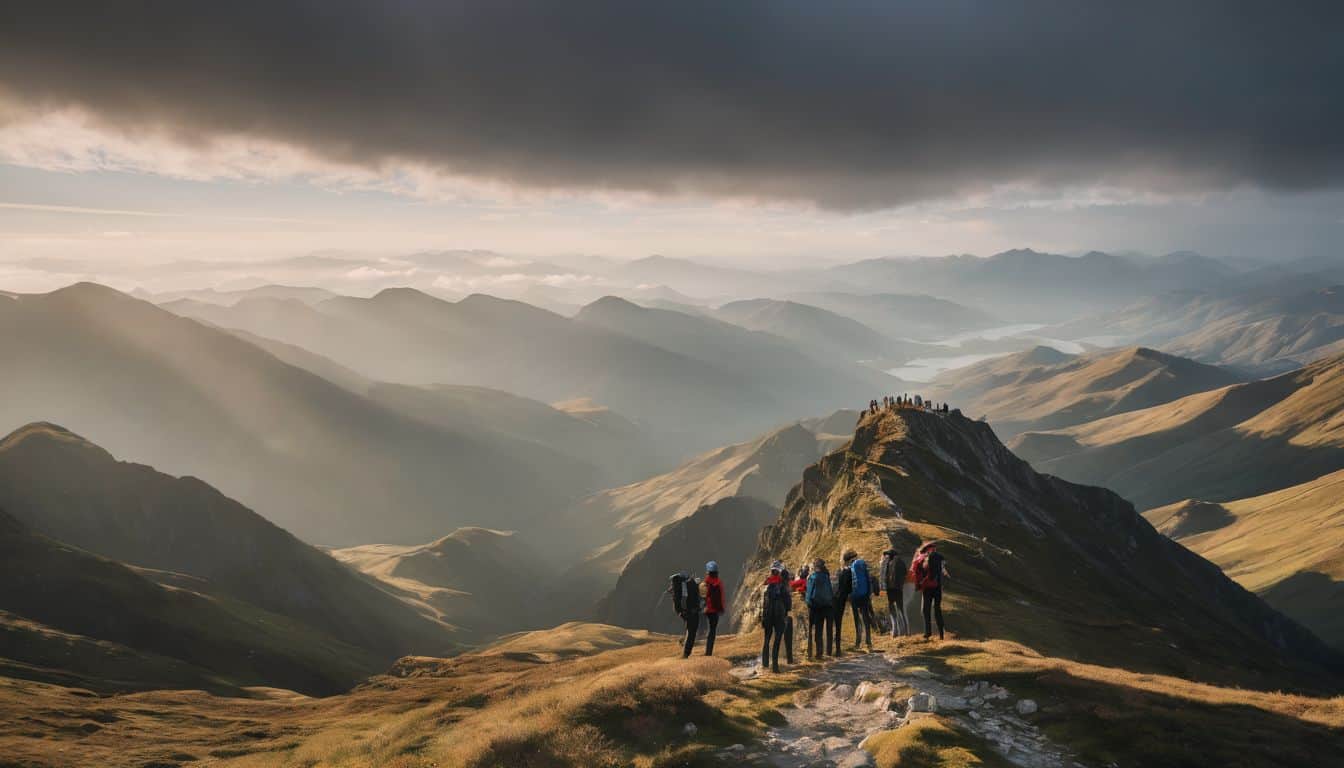
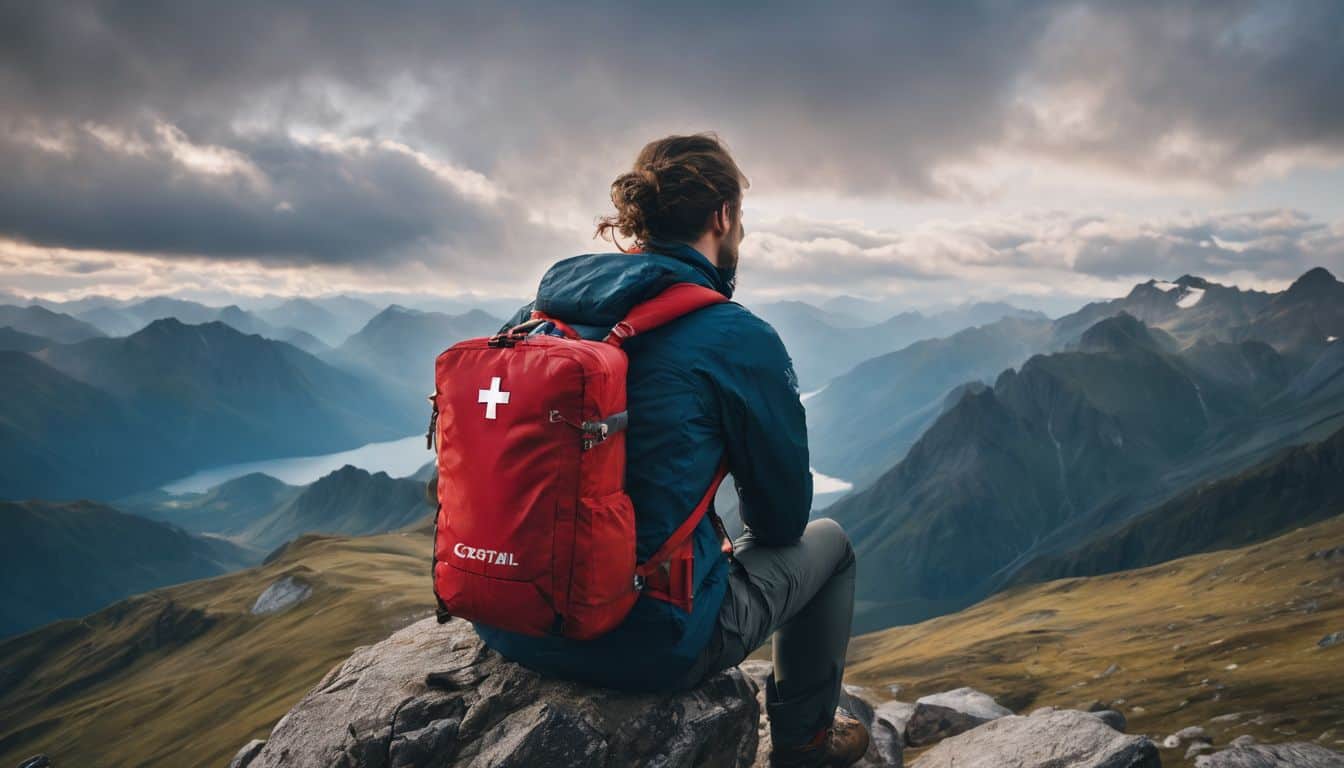
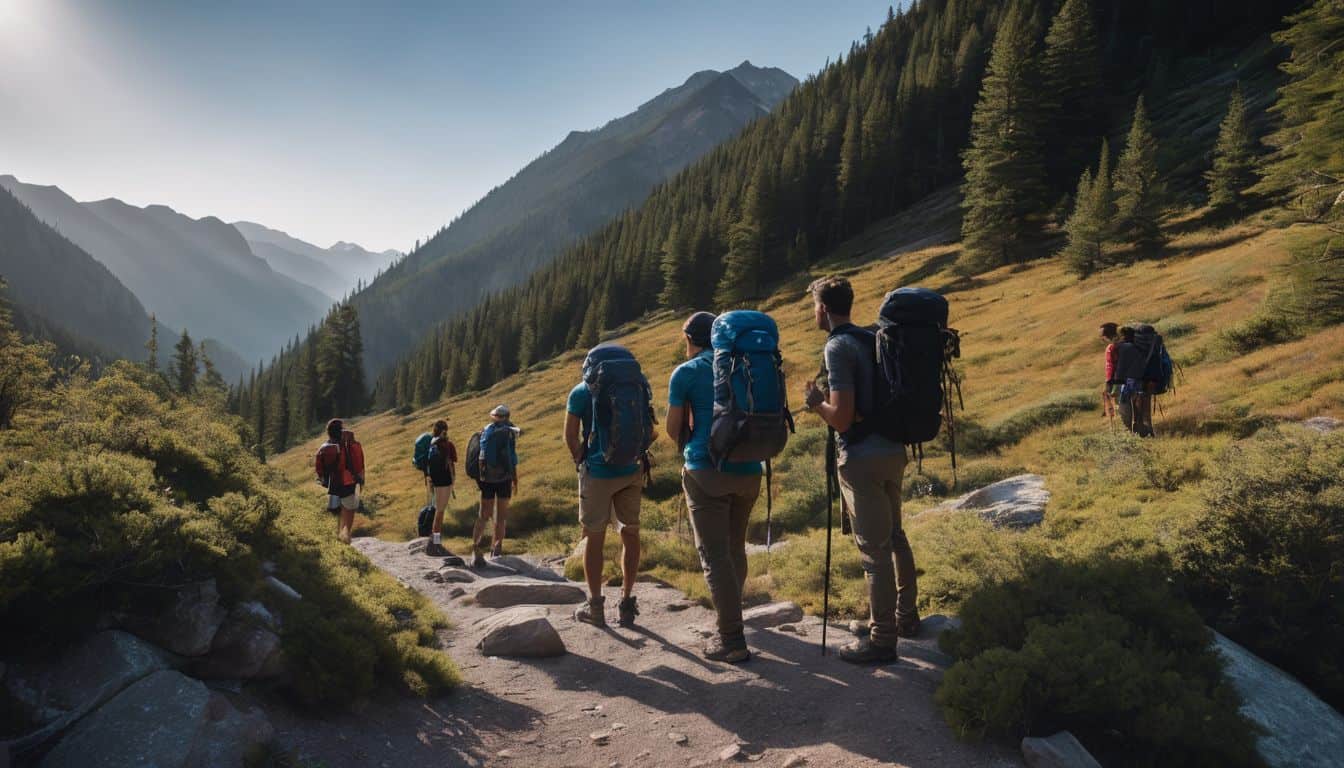
Leave a Reply